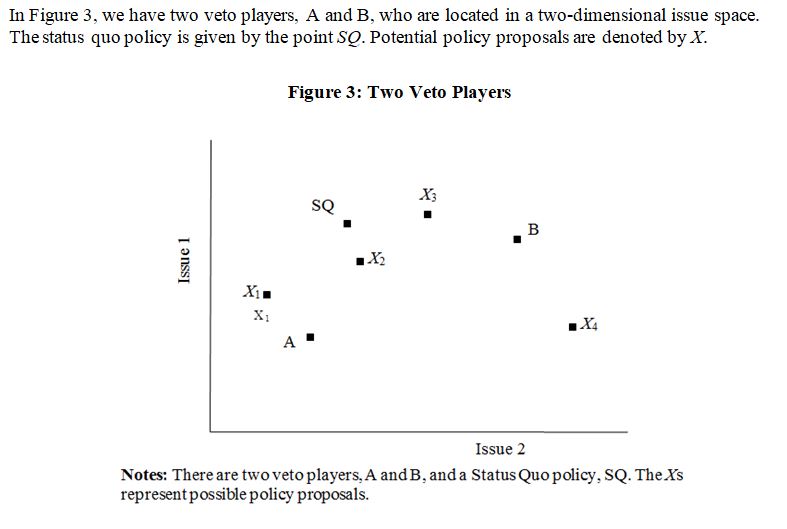If Figure 3 remained the same except that B were no longer a veto player–that is, if A could choose policy independently—where would policy end up?

A. X1
B. X2
C. X3
D. X4
E. A
F. B
G. SQ
E. A
You might also like to view...
Which one of the following is true with respect to presidential conduct of foreign policy?
a. Presidents rely exclusively on their secretaries of state to help conduct foreign policy. b. Modern presidents increasingly have become involved in conducting foreign policy by negotiating with the heads of foreign governments. c. The vice president and the secretary of defense are the president's primary links with the State Department. d. Presidential foreign policy deals only with military conflicts and sending American troops into war zones. e. Presidents are rarely called upon to make important foreign policy decisions; most of those decisions are made by Congress.
What are the impacts of foreign direct investment? If you were an adviser to a multinational corporation that was considering foreign direct investments, what factors would you recommend that the MNC look at in determining where to invest? Why?
What will be an ideal response?
All of the following are major emerging trends identified by the textbook EXCEPT
A) less frequent great wars. B) less nuclear attacks. C) more competition for wealth. D) more frequent small, interstate conflicts. E) more terrorism.
In December 2015, the Attorney General of Texas, under the leadership of Republican Governor Greg Abbott, sued the U.S. government to ______.
a. end NAFTA b. contest participation in the TPP c. receive proceeds from the NAFTA and TPP agreements d. block resettlement of Syrian refugees within the state